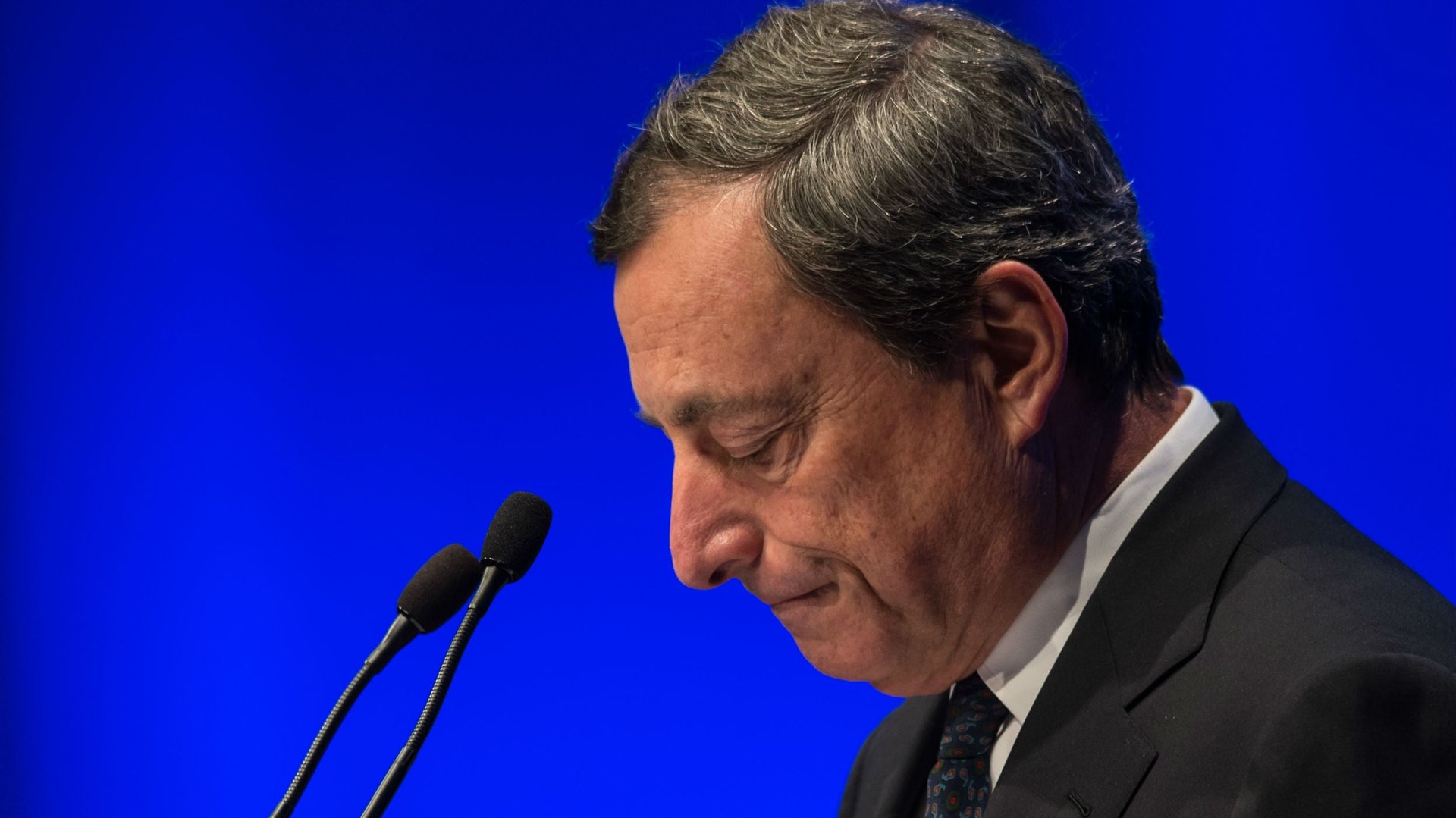How super is this Mario? ECB head must convince the Germans his plan will work
Nearly two months on, European Central Bank (ECB) head Mario Draghi is still defending his debt crisis plan.

Nearly two months on, European Central Bank (ECB) head Mario Draghi is still defending his debt crisis plan.
Today he meets with German members of parliament in a closed-door session. He’s there to defend his unlimited bond-buying program, a plan (see technical details here) that Bundesbank leader Jens Weidmann likens to printing money.
Carsten Brzeski, an economist from ING Bank, told the Wall Street Journal that Draghi must calm lawmakers and reassure them that the program is not monetary financing of government debt, nor is it inflationary. He said:
Symbolically, it’s important to go into the lion’s den, show your goodwill, but don’t do anything differently.
The question is whether the program should be defended.
The bond program, or Outright Monetary Transactions (OMT), was designed to replace a prior facility that hadn’t solved the debt crisis. The new plan offers to buy bonds from unstable economies in return for their pledge to seek help from the European bailout fund and agree to fiscal reforms.
Draghi says the program increases fiscal discipline because governments are more likely to behave responsibly if the ECB is buying their bonds and lowering their yields, allowing them to borrow and spend more.
Despite much fanfare in early September when Draghi unveiled the program, little else has happened with it beyond the usual bickering among eurocrats over whose solutions are best.
Leaders from Spain and Italy, the nations the program was particularly designed to help, haven’t asked to use it. This is partly because markets responded so enthusiastically to the program’s introduction that they brought down borrowing costs in these countries.
The larger concern is whether the plan is the right one. Shortly after its introduction, the Economist called it “a pyramid-style system“ in which banks become big lenders to the ECB, while the ECB becomes a big buyer of government debt, and the governments are backing the banks.
Whether nations would truly be forced to stay on a strict fiscal path is also questionable. The ECB says that if conditions aren’t met, bond-buying will stop. This is their incentive to stick to reforms. Yet given the number of times that Europe’s leaders have changed strategies, this is hardly convincing.
And then there’s the bigger issue of continuing austerity, which hasn’t exactly proved to be a winner. If governments apply to the program, more austerity follows, likely leading to longer recessions, more backlash from voters, and the rise of anti-euro parties that could eventually topple pro-euro governments. And then it’s back to the drawing board.